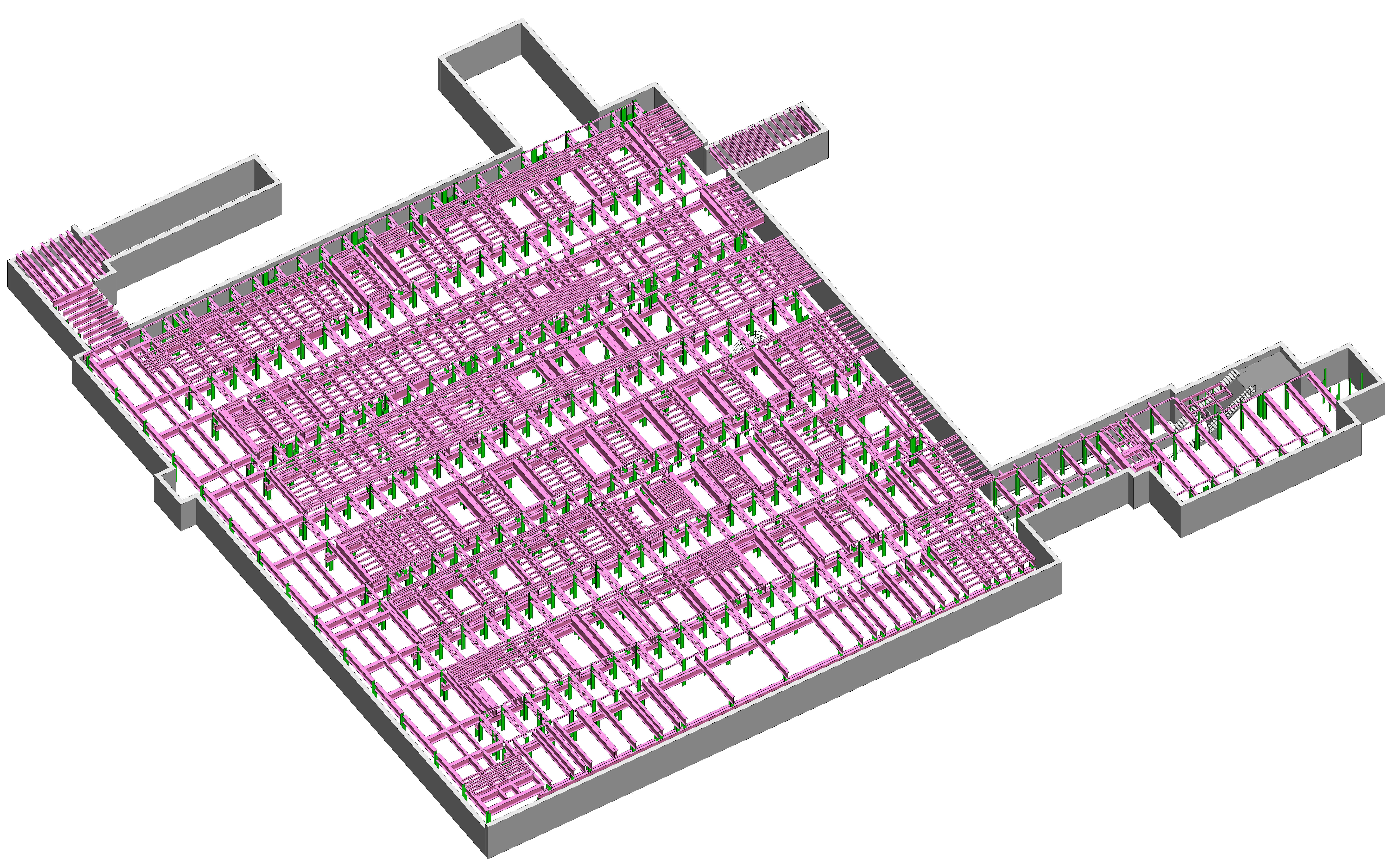What is Structural BIM Modeling and Why Is It Essential for Modern Construction?

Strong 8k brings an ultra-HD IPTV experience to your living room and your pocket.
The construction industry has seen a massive transformation over the last decade, and one term that stands out among industry professionals is Structural BIM (Building Information Modeling) modeling. But what exactly does this entail, and why has it become indispensable for modern construction?
This blog will guide you through the fundamentals of structural BIM modeling services, its numerous benefits, and how you can effectively integrate it into your projects. By the end, you'll understand why it is not just a trend but an essential tool for construction managers, civil engineers, and BIM specialists.
Understanding the Basics of Structural BIM Modeling
Structural BIM modeling is the process of creating intelligent 3D models that provide a detailed and comprehensive representation of a building’s structural components. These models include elements like beams, columns, foundations, and reinforcements, along with crucial data like material properties, dimensions, and connection details.
Unlike traditional 2D drawings, Structural BIM modeling is dynamic. The information in these models adjusts automatically when changes are made, ensuring consistency and reducing manual efforts.
Key Features of Structural BIM Modeling:
- 3D representations of structural elements
- Integrated data for analysis and simulations
- Automated updates when modifications occur
- Compatibility with modern construction tools and workflows
By leveraging these advanced capabilities, Structural BIM modeling allows engineers and project managers to make data-driven decisions at every stage of the construction lifecycle.
Benefits of Structural BIM Modeling
The adoption of Structural BIM modeling services has revolutionized construction by solving age-old challenges and bringing significant benefits to the table.
Improved Accuracy and Reduced Errors
Accuracy is crucial when it comes to structural design. A minor miscalculation in traditional methods can lead to costly reworks and safety hazards. Structural BIM eliminates such issues by enabling precise modeling and analysis.
The ability to simulate various "what-if" scenarios helps in identifying potential clashes or design inconsistencies before actual construction begins. This process, known as clash detection, is critical in avoiding on-site errors.
- Example: With BIM tools, engineers can detect conflicts between structural and architectural models, such as a beam clashing with an HVAC duct. Resolving these digitally saves time and resources.
Enhanced Collaboration and Communication
Construction projects involve input from multiple stakeholders, including architects, engineers, contractors, and clients. Structural BIM bridges the communication gap by providing a centralized digital model accessible to all parties.
This shared model ensures that everyone is on the same page, minimizing misinterpretations and fostering collaboration.
- Example: A contractor in the field can refer to the BIM model to understand reinforcement details without waiting for clarification, streamlining the entire workflow.
Increased Efficiency and Productivity
With traditional approaches, design revisions, material computations, and manual interference often slow down the process. Structural BIM, on the other hand, automates repetitive tasks like quantity takeoffs and design adjustments.
This not only accelerates project timelines but also allows engineers to focus on more critical activities such as optimizing structural integrity and ensuring compliance with regulations.
Cost Savings and Risk Mitigation
While implementing Structural BIM may seem like an expensive upfront investment, it delivers measurable cost savings throughout the project lifecycle. Accurate planning ensures that resources are used optimally, reducing material wastage and labor inefficiencies.
Furthermore, the simulation capabilities of BIM models help in identifying potential risks, such as structural weaknesses or delays in the construction schedule, well in advance.
- Industry Statistic: According to a report by Dodge Data & Analytics, BIM adoption has led to a 25% reduction in construction costs for companies leveraging this technology effectively.
Real-World Applications of Structural BIM
Structural BIM modeling isn’t just theoretical; its applications span various industries and project types.
- High-Rise Buildings
BIM simplifies the complexity of designing and constructing skyscrapers by integrating various systems like structural reinforcements, elevators, and utilities.
- Bridges and Flyovers
Engineers can use BIM software to predict load distributions, optimize the use of materials, and ensure long-term durability for heavy-duty infrastructure.
- Industrial Facilities
BIM enables precise structural planning, especially when dealing with heavy equipment foundations and seismic stability requirements.
- Residential Projects
Modular design and pre-fabricated components are made efficient with BIM, reducing the time required to deliver housing units.
Implementing Structural BIM in Your Projects
Now that you've grasped its benefits, how can you successfully integrate Structural BIM into your construction workflow?
Invest in the Right Tools
Popular software such as Autodesk Revit, Tekla Structures, and Bentley Systems offer robust platforms to kickstart your BIM adoption.
Build a Skilled Team
Your team's expertise is critical to leveraging the full potential of Structural BIM. Provide training programs or hire skilled BIM specialists to augment your workforce.
Start Small
Rather than applying BIM to your largest or most complex project right away, begin with a smaller pilot project. This allows your team to gain familiarity while reducing the risk of implementation challenges.
Monitor and Optimize
Evaluate and refine your BIM processes periodically. Use feedback from stakeholders to identify areas for improvement and ensure the long-term success of your implementation.
Best Practices and Tips for Structural BIM Adoption
Standardize Processes
Create a standardized workflow for how BIM models are created and shared to maintain consistency across your organization.
Set Clear Objectives
Define measurable goals when transitioning to BIM, such as reducing errors by a certain percentage or cutting design time.
Encourage Collaboration
Use BIM not just as a tool but as a medium to bring stakeholders together and foster creative problem-solving.
Leverage Cloud Solutions
Cloud-based BIM platforms make it easier to store, share, and update models in real time, ensuring seamless collaboration.
Stay Updated
BIM technology is constantly evolving. Keep an eye out for software updates and emerging trends to stay ahead.
Structural BIM Modeling is the Future of Construction
Structural BIM modeling is shaping the future of the construction industry, offering capabilities that were unimaginable just a decade ago. By improving accuracy, enhancing collaboration, and reducing costs, BIM empowers civil engineers, construction managers, and project stakeholders to deliver projects that are safer, more efficient, and more sustainable.
Whether you're leading a team on a new bridge design or managing multiple stakeholders on a high-rise project, integrating Structural BIM will set your organization on the path to success.
Take the first step today by exploring the latest BIM tools and best practices. With Structural BIM, the future of construction is already here.
Note: IndiBlogHub features both user-submitted and editorial content. We do not verify third-party contributions. Read our Disclaimer and Privacy Policyfor details.



